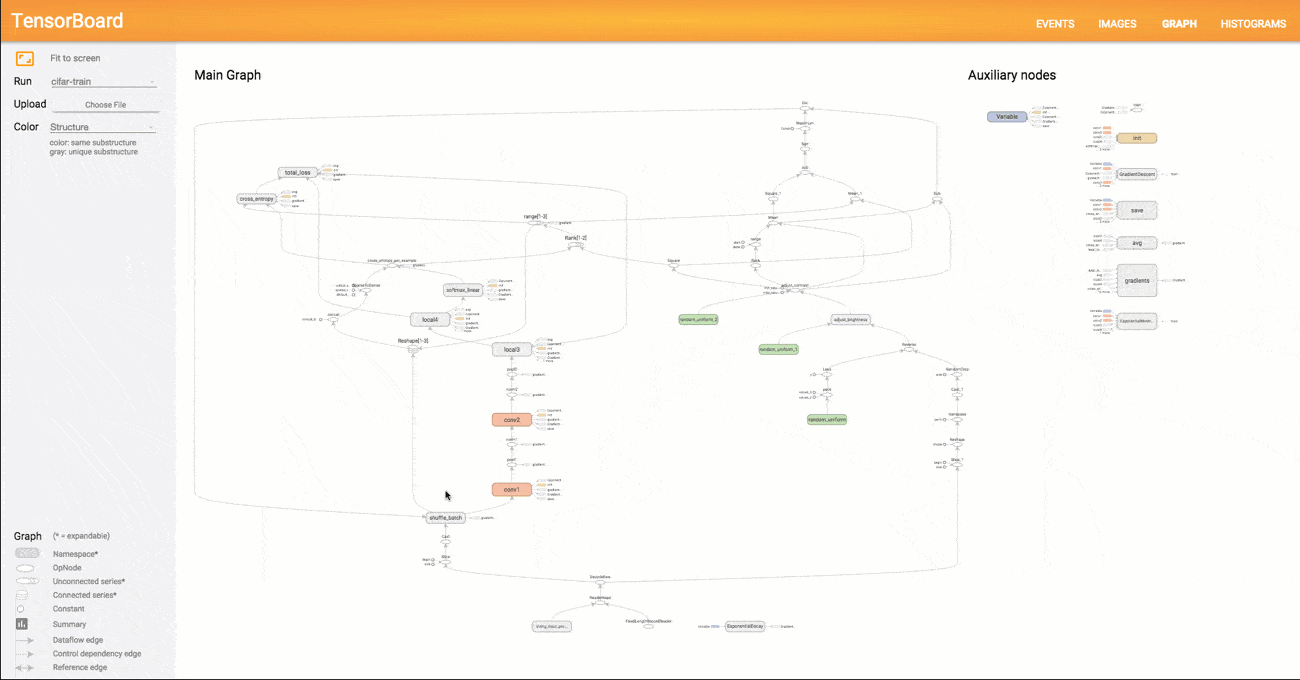1.1 kB
Chapter. Graph
TensorFlow uses a dataflow graph to represent your computation in terms of the dependencies between individual operations. A graph defines the computation. It doesn't compute anything, it doesn't hold any values, it just defines the operations that you specified in your code.
Defining the Graph
We define a graph with a variable and three operations: variable returns the current value of our variable. initialize assigns the initial value of 31 to that variable. assign assigns the new value of 12 to that variable.
with<Graph>(tf.Graph().as_default(), graph =>
{
var variable = tf.Variable(31, name: "tree");
tf.global_variables_initializer();
variable.assign(12);
});
TF.NET simulate a with syntax to manage the Graph lifecycle which will be disposed when the graph instance is no long need. The graph is also what the sessions in the next chapter use when not manually specifying a graph because use invoked the as_default().
A typical graph is looks like below:

